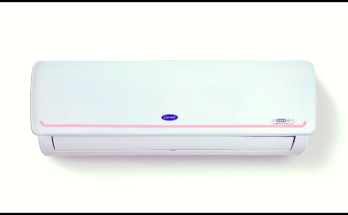Smart glasses aren’t tucked away in the far future. They became a viable reality when AR smart glasses from RayBan and XREAL became indistinguishable from regular glasses. While they seem fashionable and a great new toy to play with, they also have the potential to increase your productivity.Like any new piece of tech, the pros and cons of smart glasses are unavoidable. There are a few nicks and privacy concerns that must be addressed. However, this post focuses on the positives. Let’s figure out how these tech tools may help to boost your productivity in the future.
Ways in Which Smart Glasses Can Enhance Productivity in The Future:
1. Go Hands-Free
You’re repairing your car and encounter a problem that you’ve never faced before. Maybe the electrical system has a set of wires you’ve never seen before. Or, is it the transmission system that’s intimidating you? Either way, now you need to leave the car, refer back to the manual, flip a few pages, and get back to repair.
With smart glasses, you don’t need to deal with such interruptions. Instead, the glasses can overlay critical information from the manual in front of you with a few gestures or voice commands. The benefits of smart glasses aren’t limited to the auto sector either.
● Surgeons can benefit from an overlay of X-ray scans over the patient during the operation.
● Pilots and ground staff can get hazard warnings for smoother and safer landings and takeoffs.
● Industrial workers can get real-time data during their work and make necessary adjustments.
When you go hands-free with the help of smart glasses, you’re able to focus on the task at hand and eliminate distractions as much as possible.
2. Swift Training and Onboarding
Training new employees is a complex, time-consuming, and expensive process. That’s why companies have a complex hiring process where they assess your skill sets and how you may fit into their work culture. Well, smart glasses can make training and onboarding way easier. With the help of:
● 3D models
● Charts and graphs
● Animated mechanisms
● Step-by-step instructions
Overlaid on real-world tasks, training times can be drastically reduced. Moreover, another advantage of smart glasses is that they add more interactivity to the training session and increase knowledge retention for new recruits.
3. More Collaboration
Team collaboration can reach new heights with smart glasses. Architects can work on the same overlay of the site plan whether they are on site, or at home. Everyone can provide their input and tweak the design to improve upon it. No need to exchange emails and drive files several times.
Collaboration doesn’t just end for workers in the same team, it can also enhance the capabilities of remote assistance personnel. Instead of guiding people with instructions over the phone, you can now assign a live video feed and directly guide the customer through the issues the customer is facing. It can also reduce the need for physical assistance.

4. Fewer Risks
Heavy industries like construction and manufacturing come with a lot of work hazards. Work hazards don’t just make the workplace unsafe, but can shut down a facility for hours or days and bring down collective productivity by a wide margin. Smart glasses can reduce those risks and make the workplace safer with fewer disruptions.
Smart glasses can be programmed to provide warnings if a worker doesn’t stick to the correct wiring layout. Installation steps can also be shown with priority tags and the glass can notify the worker when they fail to stick to instructions. Regular alarms at factories go off when the situation is already out of hand. Smart glasses can proactively prevent workers from committing mistakes and increase their safety along with productivity.
Smart glasses concerns
There are a few concerns and disadvantages of smart glasses that must be addressed in this conversation on productivity.
● Privacy– You can’t use them at factories if companies making these glasses can’t address privacy issues and the IP (Intellectual Property) threat they pose.
● Battery– Limited battery life doesn’t allow long usage.
● Cost– They cost hundreds of dollars and remain inaccessible to most people.
While many hurdles must be overcome, once smart glasses become more affordable and address privacy concerns, they can bring an industry-shaking revolution. Have you identified similar pieces of tech that can do the same? Write for us in our tech blog and share your wisdom with the world.




